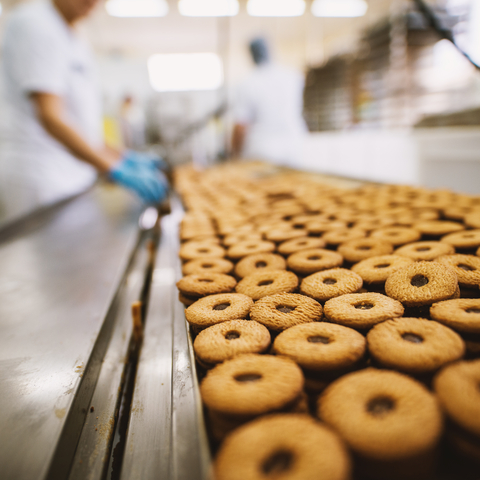What’s the best way to set up your nutrition label - by package size or serving size?
We’ve just added a new option for setting up your label that lets you simply input the weight of a serving and our system calculates the nutrition based off of that. Previously, the only way to set up a label in ReciPal was using package size. In some cases the new serving size method can make setting up your label easier and more flexible. In this blog, we’ll take a look at both methods of setting up a label and help you decide which one works best for your situation.

If you prefer to learn over video, we have a version on our YouTube Channel and embedded below:
Setting up a Label by Package Size (The original method)
Setting up a label by package size is the tried and true method that ReciPal has been using since its inception. A benefit of this method is that it allows you to accurately capture exactly what a recipe produces.
For example, let's say you have a cookie recipe that makes 120 cookies and you sell them in packages of 6 cookies. The first step would be to tell the system the net weight of a package (i.e. the weight of the contents without the packaging), which you can figure out by weighing the final product (let’s say it’s 90g).
From there, you’d tell the system the number of packages the recipe makes. In this case, it will make 20 packages (120 cookies / 6 cookies per package = 20 packages).
NEW - we’ve added a feature to calculate packages based on ingredients so you don’t have to do the math.

Finally, you’d input the number of servings in each package. To figure this out, you need to look at the FDA’s recommended amount customarily consumed (RACC) for cookies, which is 30g. If the package weight is 90g and the RACC is 30g, the number of servings per container is 3 (90g package weight / 30g RACC = 3 servings). Since there are 6 cookies in a package that means the descriptive serving size would be 2 cookies (6 cookies / 3 servings = 2 cookies per serving). This is a simple example, but we've got a whole blog on figuring out the FDA serving size.

We like this method because as long as you know the inputs and outputs of your recipes you can accurately capture everything that happens in the process. For instance, with cookies there will likely be some moisture loss in the baking process. With this method, you don’t need to know anything about the moisture loss - just enter the actual weight of one of your packages and it will automatically be accounted for.
Setting up a Label by Serving Size
Using serving size can be an even more straightforward method. This option means you can calculate a serving’s nutrition with a single input. Further, you don’t need to have the specific details of a recipe’s output. With this method, our system scales the nutrition of your recipe to whatever serving size weight you enter.

For recipes in the R&D phase, you can set up ingredient percentages. For instance, let’s say your cookie recipe is 50% flour, 25% butter, and 25% sugar, but you don’t yet know how you will actually produce it or what your recipe will yeild. You can simply set the ingredient weights to add up to 100g. After that, you can set the serving size as 30g (the RACC for cookies) and get the nutrition of a single serving.

Whereas our original method divides the net weight per package by the number of serving to calculate the serving size weight, this method allows you to enter the serving size weight directly - making it easier to see nutrition of an exact RACC.
So when you have a recipe, but don’t know the details of its output, this method makes calculating the nutrition much easier. However, there is a drawback. The serving size method currently doesn't account for moisture loss or density, so if that’s something you need, setting it up by package size will be the way to go.
UPDATE 1/14/25: When we originally launched this feature there wasn't a way to account for moisture loss. We've now added a field to enter moisture loss. So if the weight of the ingredients of your recipe totaled 100g and after cooking the end product weighed 80g, you would enter a 20% moisture loss to accurately account for the water evaporation.
What’s best for you?
While either method can work, here are some considerations to help you make the best choice:
You may want to choose to set up your label by package size if…
- Your recipe’s packaging is finalized
- You want to directly enter the ingredient amounts for a batch
- You know the exact output of your recipe (weight of package, number of packages, servings per package)
- You want to account for moisture loss or density by simply entering the end weight of your product
You may want to choose to set up your label by serving size if…
- Your recipe is in the R&D phase
- You don’t know specific amount of ingredients in a batch
- You don’t know the exact output of your recipe
- You want to enter the serving size weight directly (RACC)
- You want to account for moisture loss by entering a percentage
Setting up labels by serving size weight was a feature that many users have requested and we’re excited to roll it out. We hope this makes generating labels even easier, especially when you're experimenting with new prototype recipes. Please let us know if you have any feedback or ideas to make this feature even better.






